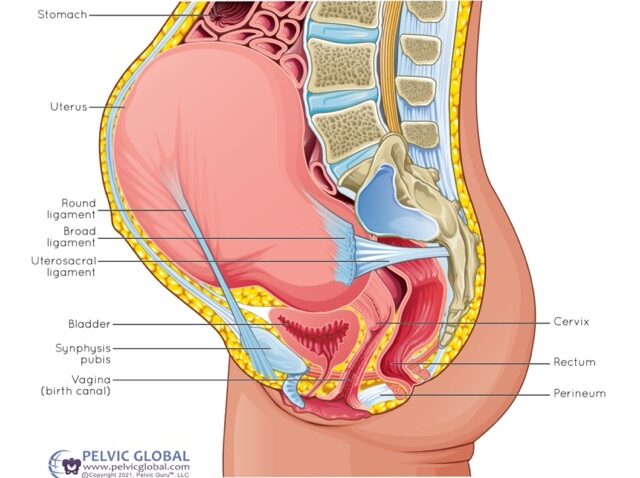Welcome in! I am so happy you are here. As a pelvic floor physical therapist and mother of two I am here to share with you my top three exercises to prepare your body for birth. In this article I will not only share with you the best exercises to support a vaginal delivery, but will tell you WHY these birth prep exercises are so impactful.
Spoiler alert: Your body’s job is to follow the dance of the baby. To soften, relax and move out of the way.
The three areas of the body were we want to create balance and space for a natural birth are the pelvic flow, the bony pelvis and the abdomen

Relaxing Your Pelvic Floor Muscles
The pelvic floor’s job is to soften, lengthen and release to birth your baby.
Read that again: The pelvic floor’s job is to soften, lengthen and release to birth your baby.
The job of the pelvic floor is not to be strong, to contract or to kegel. The role of the pelvic floor is to lengthen. In fact, it will lengthen 250% its length to birth your baby!
So…STOP doing kegels and contracting your pelvic floor.
There is a time to build pelvic floor strength and that time is not now.

So how does one go about lengthening and relaxing their pelvic floor muscles.
Step One: bring some awareness to your pelvic floor muscles.
Can you feel where they are? If you do a kegel, can you feel them contract? Now relax them, can you feel them let go?
What happens to your pelvic floor when you inhale? How about when you exhale?
What do the muscles of your pelvic floor do when you hold in gas? Have a bowel movement? Go pee?
Step Two: Spend 2-3 minutes in a supported wide legged forward fold.
The wide legged forward fold does a few things. First and foremost it lengthens and relaxes the facia of your inner thighs, which is continuous with the facia of your vulva and abdomen. Creating more space here, creates more space in your pelvic bowl and in your belly.

Find your way into a wide legged “V” in whatever shape feels most comfortable for your body.
Once there lean forward, using as many pillows and blankets as needed to support your torso so that you can fully relax into the sensation.
Notice the sensation that is present. Notice what is happening in your pelvic floor. Breathe and stay present with the sensation.
Creating Space in Your Pelvis

The Fencer – hip and pelvis opening
- Kneel on the floor in a 1⁄2 kneeling position – one leg up and one leg down.
- Keep your hips facing forward and open your front leg out to the side.
- Sit up tall and tuck your tail bone under. You may feel a stretch just by
doing this. - Shift your weight towards the leg with the foot on the floor
- Feel the stretch in your groin or inner thighs
- Rock in and out of the position 5 times and then hold for 1-2 minutes

Creating Balance in your Belly and Space for Baby to Move
My last go to exercise for preparing for a vaginal birth focuses on creating space and strength in your belly itself. We typically think about our abdomen as our growing uterus, our organs that are getting squished and the abdominal muscles. These are all a part of your belly and another important piece is the ligaments and fascia that support your abdominal muscles, your growing uterus, and all of your organs.

Deep Core Strengthen and Lengthen
- Hands directly under shoulders, knees directly under hips
- Round and arch your back a few times to find a neutral spine.
- On an exhale – draw your belly button towards your spine lifting and hugging your baby closer to your body
- On the inhale and fully relax your belly letting the weight of your baby move away from you
- Let you belly relax completely
- Repeat the cycle 10 times


TL/DR: exercises to support childbirth
- Wide legged forward fold
- The Fencer
- Deep Core Strengthen and Lengthen
I recommend doing these exercises daily!!
Do you want to learn more and dive deeper into how to prepare your body for labor and birth? Join me in the Training for Labor class where we go over all of this and more. Come learn about the anatomy of birth and more exercises to help you prepare for the big day.